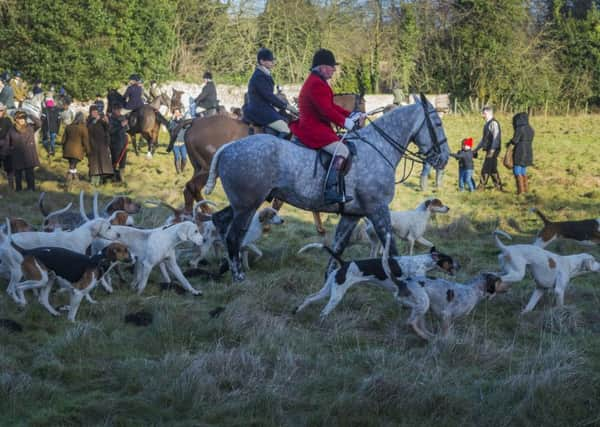Tim Bonner: The anti-hunting movement is not really about the welfare of animals, it is about a hatred of people


In Yorkshire, hunting remains particularly strong, with 20 packs of foxhounds due to meet on Tuesday as well as assorted packs of beagles and harriers. In the countryside, the Boxing Day meet is no different from the tradition of Boxing Day football matches, and both are much healthier than the more recent post-Christmas habit of going shopping.
Hunting is not a “controversial” activity amongst those who live and work in the countryside. Some like it, some don’t, but the idea that this traditional and slightly odd activity should have become a national political issue is fairly ludicrous wherever you are viewing it from. The fact that somewhere in the 20th century the eradication of hunts and the 40,000-odd people who follow them became, in the words of a leading Labour politician, “totemic to the Labour Party” is utterly bizarre.
Advertisement
Hide AdAdvertisement
Hide AdThe “totemic” ban was passed in 2004, but it has little to do with animals or their welfare. The chairman of the then government inquiry stated very clearly that hunting was not cruel, and it remains perfectly legal to shoot a fox, trap a fox or snare a fox. In fact, research has shown a big drop in the UK’s fox population since the ban on hunting came into force. The one thing we can be absolutely certain of is that the fox is no better off as a result of the ban.
There can be no logical justification for such a ridiculous law so what was the real motivation for the ban? If that was not already obvious the admission of one MP as soon as the law was passed that it was “class war” was a bit of a giveaway, and the subsequent continuing campaigns against hunts that are no longer hunting foxes can leave only one conclusion. The anti-hunting movement is not really about the welfare of animals, it is about a hatred of people, and so it continues its obsessive pursuit of hunts.
Meanwhile, in the countryside, support for hunting remains undimmed. More women and young people continue to take up hunting as it remains open and accessible to everyone. Hunting prevails in some of the most marginal of rural communities. In many remote rural areas, hunts play an important social role in times of challenge and change.
The real shame is that this issue continues to soak up so much energy that could be used for something positive, not least given the huge challenges facing the countryside in the coming years. Our ever-growing population puts more pressure on green spaces as the demand for housing and infrastructure grows and when the absolute priority should be to ensure that Brexit works for the countryside it remains bizarre that issues like hunting remain so far up the agenda of some politicians.
Advertisement
Hide AdAdvertisement
Hide AdOf course, our countryside is a national treasure, but it is also a home and workplace for millions of Britons. Those who live and work there can sometimes be forgiven for feeling that the countryside is treated as a theme park and its issues as political footballs.
The hunting debate, extraordinary as it is, cannot be viewed in isolation.
There will be thousands of people going shooting in Yorkshire on Boxing Day after a duck or a few pheasants with friends and family.
The shooting industry is one of the fastest-growing businesses in the countryside, employing hundreds of people in Yorkshire and bringing visitors from all over the world from August through to January.
Advertisement
Hide AdAdvertisement
Hide AdMeanwhile Wetherby will be hosting its traditional Boxing Day race meeting and a few hardy souls will undoubtedly be trying to catch a fish or two. All these activities have their vocal opponents, motivated by the same ignorance and confused prejudice that drives the anti-hunting campaign.
The resilience of hunts and their determination to continue with their traditions on Boxing Day and beyond is the best defence against the creeping agenda that would turn the countryside into a theme park.
If ever there was an example of a pointless political issue, hunting is it. All the hours of Parliamentary debate, the millions of words and endless media scrutiny have achieved exactly nothing. There has been no benefit to the huntsman or the fox, but worse than that hundreds of hours of police time and thousands of pounds of taxpayer’s money continue to be wasted.
Yet the image of huntsman, hounds and countryside repeated endlessly on pub signs, paintings and illustrations remains as totemic as it has ever been, and as long as hounds meet on Boxing Day in the towns and villages of Yorkshire the countryside will be better for it.
Tim Bonner is chief executive of the Countryside Alliance.